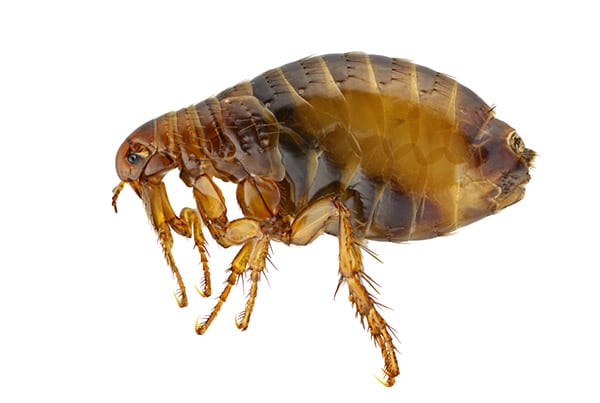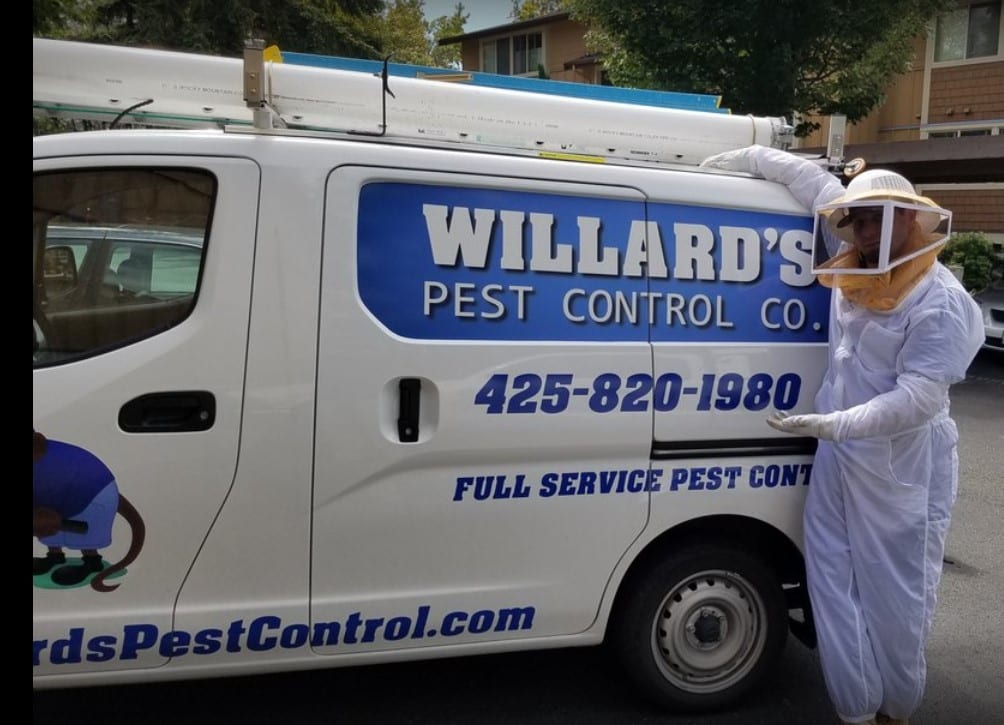There are several species of fleas in the United States, but the most common pest species is the cat flea. Fleas are small, dark colored wingless insects only about one-sixteenth of an inch long. Adult flea bodies are narrow from front to back to facilitate moving through the host animal’s fur. This particular adaptation also allows fleas to hide easily in folds of furniture, between floor boards, behind baseboards or even in sub-flooring. This can make control difficult.
Fleas undergo 4 life stages: egg, larvae, pupae, and adult. Eggs are often laid on the host animal but fall off in the house, becoming embedded in carpet or furniture. In the case of cats, fleas could be found in very unusual areas considering cat’s proclivity to climb on furniture in the home. Flea larvae will feed on organic debris such as hair or feces of adult fleas. Larvae can become attached to carpet fibers and resist the pull of a vacuum cleaner. Pupal cases are often covered with dirt or debris from their surroundings creating perfect camouflage.
Fleas are also covered with spines bent backward that make it difficult to be scratched off the host animal. Fleas are built for jumping with strong hind legs. Anyone who has tried to capture a flea has been amazed at how far a flea can jump and escape capture. Fleas have piercing sucking mouth parts to penetrate host skin and feed on blood. Fleas are an important vector of disease pathogens as documented by the Black Plague of Europe that killed 20 million people.

Fleas can remain in the pupal stage for months and emerge when they detect the presence of a suitable host. Hosts body temperature usually is the trigger. Adult fleas can remain dormant until a host enters a room. These two phenomenons explain the characteristic “burst” of flea activity in a home that has otherwise been unoccupied. Typical reactions to fleas by humans are small reddish bumps that itch. Reactions will vary from non to severe depending on the individuals sensitivity to the flea bite.
Signs of flea infestations are pets that scratch constantly or seeing fleas in your home. Flea control includes premise treatment of affected areas as well as treatment of the pet.


